by mark | Feb 5, 2022 | Riffs from the Cat
Background
The Roland TB 303 was designed by Tadao Kikumoto and manufactured by the Roland Corporation (Japan). It was released in 1981 as an accompaniment to the TR-808 drum machine. The 303 was a bass synthesizer with a pitch-to-voltage (CV) interface and a transposition control that allowed a performer to change the tone of the instrument from bass guitar to lead. It also had an on-board low-pass filter, accent control and portamento.
The TB 303 was originally intended to partner with the TR 606 drum machine so that composers could create a simple backing track for composing. The problem was it sounded nothing like a bass guitar so it did not catch on and Roland ceased production.
However, this strange silver box was destined to become one of the most influential electronic synthesizers as it became the heart of a new form of electronic music was emerging in the USA, Detroit Techno.
Detroit Techno and the birth of Acid House.
The sound of Detroit techno is considered to be a technological and minimalistic version of house music with heavy, hypnotic bass lines and nonstop repetitive beats. It became popular in the mid-80s and early 90’s during the rise of rave culture with many DJs mixing dance tracks from different record labels into an almost continuous performance. The original Detroit Techno artists were Juan Atkins, Kevin Saunderson and Derrick May. They would experiment with making tracks for several hours, often exchanging ideas and working as a team to create music that sounded good. Meanwhile, Chicago Djs were pushing the house style in another direction and Acid house was born
Acid House and the 2nd Summer of Love
Acid house was an entirely new style of music that combined minimalist production aesthetics with a prevalent four on the floor beat. The soundscape became defined by using these iconic Roland TB-303 synthesizers and modulating their frequency or resonance control for texture which created movement within otherwise simple bass patterns.
The first Acid House single was ” Acid Trax “, produced in 1984 by Chicago-based DJ Pierre. Another early Acid House track was ” Ain’t No Love (The Ox Mix) ” by Mac Ten aka Mac Stevens, released in Detroit on DJ Ron Hardy’s label Magic Heart Records. Other notable acid house tracks of 1987 included Phuture’s “Acid Tracks”, and UK artist CJ Bolland’s “Sugar is Sweeter as the new sound started to gain momentum in Britain hearding the second summer of love.
The UK Acid House scene
In the late 1980s, a culture started to develop which was a fusion of acid house music and MDMA. The “Acid House Kings” Phuture had a track which sampled the dialogue from the 1967 Peter Fonda B-Movie “The Trip”.
The influx of these records in the UK fuelled the appetite for this type of music and in 1987/88 you started to see records from US producers such as Mr Fingers, Ce Ce Rogers & Adonis being imported into the UK on 12″ vinyl at a much faster tempo than house listeners were used to, these tracks were between 130 to 140 bpm.
Many DJ’s started to create their own tracks using keyboards, drum machines and samplers mixing in drum breaks with acid lines to create this new fangled sound. By 1989 the scene was blossoming with people organising illegal parties known as “raves” which would be held in empty warehouses and factory units. UK DJ’s such as Carl Cox Fabio & Grooverider were held in high esteem within the scene and travelled abroad to play at raves across Europe, spreading the acid house sound.
The illegal status of these parties and the drug associated with it gave this genre a bad name as there were many deaths at these raves due to overcrowding and also the drug aspect. Soon this music became frowned apron by the authorities who would stamp down introducing a act of parliament to make outdoor raves illegal.
However, the success of the music could not be denied and by late 1988/89 you started to see some records charting high in the UK charts including “Theme from S’Express” (produced by DJ’s Mark Moore & Dave Dorrell) & “House arrest” by Robin S (produced by DJ Pierre).
The rest is history. The dance scene continued to grow with the birth of the super club and the hedonistic vibe of Ibiza ending up as EDM with the global superstar DJ and a sound now fully entrenched in popular music.
by mark | Feb 5, 2022 | All about Kit, My life with Music
A groundbreaking computer for music-making.
When it came to digital audio production It’s fair to say that the Atari ST Computer was groundbreaking. At a time when you needed special hardware like an instrument or hardware sequencer to sequence sounds into songs, the Atari ST allowed people to make music and sequences with a home computer.
What made it special
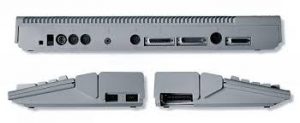 The ST’s game-changer was the inclusion of two sockets to its rear, labelled “MIDI”. For most people these were just another couple of ports that would never be employed in their day-to-day lives; for a wannabe bedroom electronic dance music producer this meant connecting our computer with other devices using MIDI technology!
The ST’s game-changer was the inclusion of two sockets to its rear, labelled “MIDI”. For most people these were just another couple of ports that would never be employed in their day-to-day lives; for a wannabe bedroom electronic dance music producer this meant connecting our computer with other devices using MIDI technology!
I had an Atari 1040ST, which offered 1MB of RAM and was double the size compared to its former little brother. The onboard floppy disk drive accepted 3.5″ diskettes that whirred for about a minute and a half with each loading program.
Opening doors to superstardom
What made this set-up so powerful was that if you had a synth or sampler with midi in you could load a sequencing programme into the Atari, I used a programme called Breaktweaker. By today’s standards, it was very basic but at the time it allowed me to get the musical ideas in my head into my ST. If your external instrument was multi-timbral it meant that you had 16 tracks to play with. Enough to put together a track. Connected your instrument to a four-track tape deck and that was it. You could make and record a track all in the comfort of your bedroom and send the demo off to a record company and wait for the phone to ring, no email in those days.
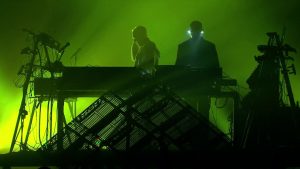
Many did. Orbital, one of the leading Dance acts of the 90s made their breakthrough single Chime at home. It cost £1 to produce, got them on TOTP and headlining Glastonbury blowing the crowd away with their euphoric brand of acid-based dance.
The Atari ST and Me.
The beginning of a love affair with electronic music production
The ST had been out a few years before I started my music-making journey. It was the computer of choice for many electronic musicians so I jumped right in. I had no experience with MIDI and little knowledge of how it all worked. This was back in the day before YouTube and online tutorials but there was a great publication called Future Music which became my bible. I slowly started to work it all out
It seemed that the killer combo was to team up the Atari ST with a sampler such as the Akai S1000, Roland or an Ensoniq ASR 10 which was the route I took. The sampler was such a versatile instrument. You were only limited by your creativity and the small, memory capacity. My ASR 10 had 16 meg available. These days I have unlimited capacity but I cannot honestly say if what I produce now is a lot better than what I came up with on my limited set-up. Being constrained made you think creatively. That mindset has stayed with me ever since and influences the way that I build my tracks with today’s tools
I used to make small sequences on my Atari and then transfer these via Midi to my ASR10 which had an onboard 8 track sequencer that was rock solid. I would take my ASR 10 out and play these dodgy underground clubs that went on all night and everyone was off their heads. What a blast.
For some reason that I cannot remember I never once recorded anything or made a demo. Maybe because I was smoking far too much weed at the time.
Eventually, my Atari gave of the ghost, strangely at about the time that I took a break from music production. I love my set-up with my Powerful Mac and software that can do things that I couldn’t imagine possible back in the day.
by mark | Jan 31, 2022 | My life with Music
My first open-air Rock festival or how to spend a weekend in a small tent with three fellow long hairs and survive.
I have never been to a festival before, so when my friend Berts older brother Kevin asked us if we wanted to go with him and his mate we both jumped at the chance. I mean, the Faces were headlining and Rod was the Man for all us 16-year-old Glam Kids.
So the night before we all meet round Berts pilled into his car loaded up with a tent and some other stuff and off we set.
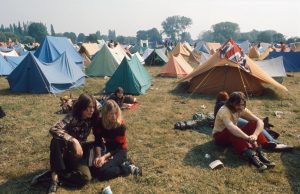
We arrived at about 8 pm set up the tent then Kevin and his mate disappeared, probably to buy some weed and left me and Bert to take in this exciting new world. I recognised the smell of the herb, My cousin had introduced me to it a few months earlier although I had not told Bert or any of my other friends as I was not sure what they would think of me. We started off a lot older in those days. To be honest it hadn’t done too much for me so I wasn’t that fussed. That would change a few months later leading to a weed habit that would take me years to kick.
Day One: I fall in Love with Genesis
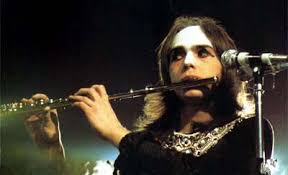 I can’t remember the first acts. Mungo Jerry played, they had had a big hit with “In the Summertime” All that I can remember is being pretty broad with the music and spending time wandering around.
I can’t remember the first acts. Mungo Jerry played, they had had a big hit with “In the Summertime” All that I can remember is being pretty broad with the music and spending time wandering around.
Until Genesis hit the stage.
Bert had introduced me to Genesis LP Nursery Cryme, Kevin had a copy and we both liked it so we were looking forward to it
And they did not disappoint. The Knife, Watcher of the Skies, The Musical Box and the return of the Giant Hogweed. Every one a Prog Rock masterpiece. Peter Gabriel was an amazing frontman using various stage props to get into character bringing the songs to life. I was hooked, head over heels and began a love affair with Genesis that lasted until Lamb Lies Down on Broadway.
Curved Air closed the show. They had recently enjoyed their first chart hit with Back Street Love, It’s a very good song so I was looking forward to them but sadly they made zero impression on me probably as I was unfamiliar with any of their other tracks.
Day Two: A day of some musical magic where Rod and the boys play almost sober.
Three bands did it for Me. Focus were a Dutch Four piece with an amazing guitar player and a bloke that played the keys, and yodelled !! They played a fusion of Jazz and Rock unlike anything else at the time, tracks 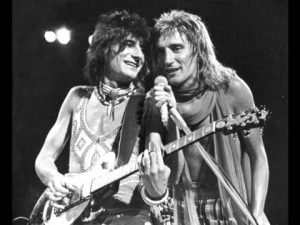 that would extend. A bit like the Grateful Dead although the Dead’s sound was more Acid Rock. They were good, very good.
that would extend. A bit like the Grateful Dead although the Dead’s sound was more Acid Rock. They were good, very good.
Then there was the Edgar Broughton Band. I had never heard of them. They came on just as it was getting dark. I loved their set they got the crowd totally engaged. I can still remember the crowd chant of “Out Demons Out” I did not have a clue what it meant but it was great fun. A bit like standing on the terraces at a football match.
Then came Rod and the Boys and they did not disappoint. They were one of the hottest acts around and I could see why. It broke my heart when the Faces split up. Sorry, Rod Stewart lovers but for me, he became ridiculous crooning on about sailing and wiggling his arse like some old perv.
But I still have “Every Picture tells a story” to remember him when he was the real deal.
Day Three. : Was there a day Three?
I honestly cannot remember a thing about day three. It was nothing to do with drinking or drugs, I did nether. Perhaps we went home. I remember having a great time starting a love affair with Genesis and Focus that I still maintain to this day.
It was also the one and only outdoor gig that I attended without a bag of Weed until many years later when I went to see Tom Jones at Newmarket with the misses.
by mark | Jan 28, 2022 | My life with Music
The first Prog Rock band that I fell in love with was Genesis. My taste was widening, moving away from chart-based music and into the LP. My introduction to Genesis was listening to Nursery Cryme, at my friend Robert Halls house. His older brother Kevin ( RIP fella) had loads of cool LPS and we started to explore. That’s how we came across Nursery Cryme. I started to fall in love with Genesis and my feelings were cemented when Kevin took us to our first outdoor concert Reading 1972. We had gone to see the Faces but Genesis who headlined Friday were brilliant. Peter Gabriel was an amazing frontman using various stage props to get into character bringing the songs to life. I was hooked, head over heels and began a love affair with Genesis that lasted until Lamb Lies Down on Broadway.
If I am honest I thought that the band and Gabriel, in particular, disappeared up their own backsides with that LP.
Foxtrot, Was this Genesis Masterpiece? 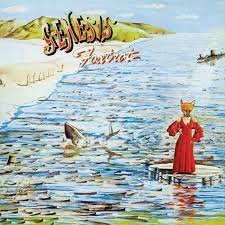
Foxtrot is the fourth album by Genesis. It was released in 1972 through Charisma Records. This album would be their last to feature guitarist Anthony Phillips who left the band after completing his parts for it. The next time he would play with them would be for a one-off performance of “The Knife”.
The Album
Foxtrot is a concept album that is split into two parts. The first (side One) is the more traditional progressive rock sound that is heard on their previous albums and in some of their later work with its complex and lengthy songs.
Side One
For me, the stand out track on side one is “Watcher of the Skies” The use of the Mellotron creates an atmosphere of menace, a feeling that builds as the track professes. The use of a staccato riff adds to the power of the track doing justice to the title. Another standout track is “Get them out by Friday” where the band demonstrate a social conscience as Peter Gabriel tackles the topic of eviction and relocation something that many had to endure as they were forced to move out of London to new towns that had found favour with the government of the time. I was fortunate to see the Band four times and I always enjoyed Gabriel’s performance of this track, how he used his voice to switch characters. The song also mentions Harlow New Town, just down the road from my home town of Hoddesdon.
My favourite band of the time were referencing my backyard 😉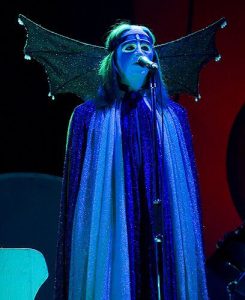
Side Two
Side two begins with “Horizons”, a short guitar instrumental written and performed by Steve Hackett before ending with the 21-minute progressive rock suite “Supper’s Ready”. which runs for 21 minutes and is divided into 7 parts. The song and its theme of good versus evil were inspired by an experience Gabriel had with his then-wife Jill, they were at Kensington Palace in London. She reportedly entered into a trance as all windows blew open there; he compared it to a Hammer Horror film.
It’s a remarkable work that I fell head over heels in love with. Each part moves blends into the whole effortlessly building to a climax with “Apocalypse in 9/8” a track that showcases the musical brilliance of Tony Banks Mike Rutherford and Phil Collins. Yep, Phil isn’t just a singer of nice pop songs. Back in the day before he dominated the airwaves in the 80s, he was a hell of a drummer and the engine room in one of the greatest ever Prog Bands.
But my favourite track from “Supper’s Ready” is “Willow Farm” It’s nuts and Gabriel’s lyrics are genius.
Conclusion
So was Foxtrot Genesis Masterpiece? I believed so at the time. For me, it was stronger than any of its predecessors even though I do not feel that it had a track that could rival “The Musical Box from Nursery Cryme. The follow-up, “Selling England by the Pound” although good did not take me on a journey in which the way that Foxtrot did.
I hated “The Lamb Lies Down on Broadway” and when Gabriel left Genesis I left them as well disinterested as in my eyes they became a pop act. This means that I cannot comment on any post-Gabriel output. I’ve never listened to it apart from radio and I do not intend to. Far more interesting music to explore out there.
And yet these days the Genesis Lp that I listen to the most of “Selling England by the Pound” and I now consider this to be the finest Lp that this amazing band produced.
Foxtrot reached number 4 in the UK charts and number 70 on US Billboard 200.
And I loved it

 The ST’s game-changer was the inclusion of two sockets to its rear, labelled “MIDI”. For most people these were just another couple of ports that would never be employed in their day-to-day lives; for a wannabe bedroom electronic dance music producer this meant connecting our computer with other devices using MIDI technology!
The ST’s game-changer was the inclusion of two sockets to its rear, labelled “MIDI”. For most people these were just another couple of ports that would never be employed in their day-to-day lives; for a wannabe bedroom electronic dance music producer this meant connecting our computer with other devices using MIDI technology!

 I can’t remember the first acts. Mungo Jerry played, they had had a big hit with “In the Summertime” All that I can remember is being pretty broad with the music and spending time wandering around.
I can’t remember the first acts. Mungo Jerry played, they had had a big hit with “In the Summertime” All that I can remember is being pretty broad with the music and spending time wandering around. that would extend. A bit like the Grateful Dead although the Dead’s sound was more Acid Rock. They were good, very good.
that would extend. A bit like the Grateful Dead although the Dead’s sound was more Acid Rock. They were good, very good.

Recent Comments